Pascale Walters
Ice hockey player identification via transformers
Nov 22, 2021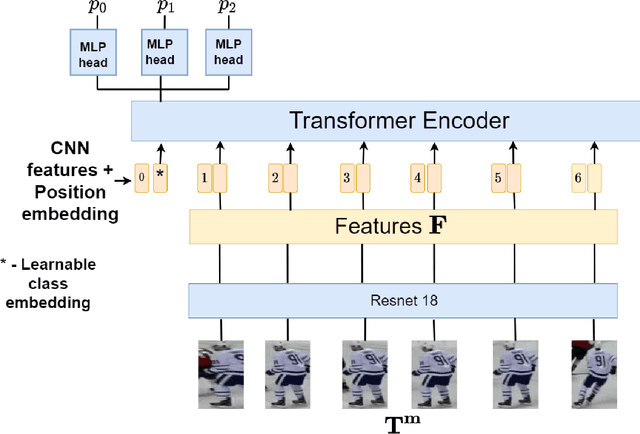
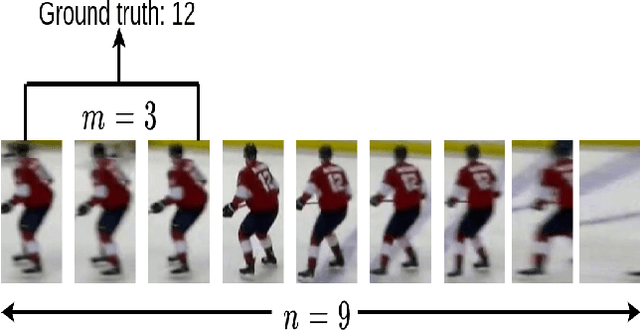
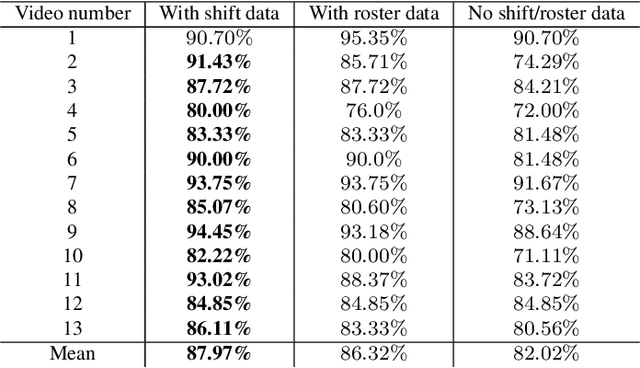
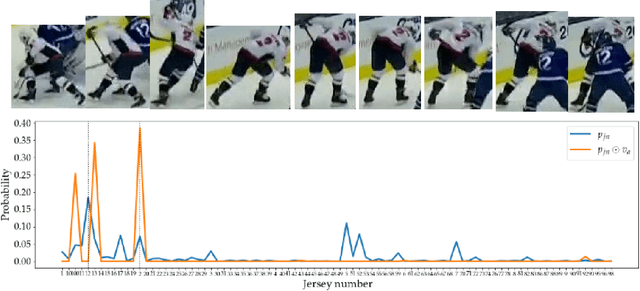
Abstract:Identifying players in video is a foundational step in computer vision-based sports analytics. Obtaining player identities is essential for analyzing the game and is used in downstream tasks such as game event recognition. Transformers are the existing standard in Natural Language Processing (NLP) and are swiftly gaining traction in computer vision. Motivated by the increasing success of transformers in computer vision, in this paper, we introduce a transformer network for recognizing players through their jersey numbers in broadcast National Hockey League (NHL) videos. The transformer takes temporal sequences of player frames (also called player tracklets) as input and outputs the probabilities of jersey numbers present in the frames. The proposed network performs better than the previous benchmark on the dataset used. We implement a weakly-supervised training approach by generating approximate frame-level labels for jersey number presence and use the frame-level labels for faster training. We also utilize player shifts available in the NHL play-by-play data by reading the game time using optical character recognition (OCR) to get the players on the ice rink at a certain game time. Using player shifts improved the player identification accuracy by 6%.
Player Tracking and Identification in Ice Hockey
Oct 06, 2021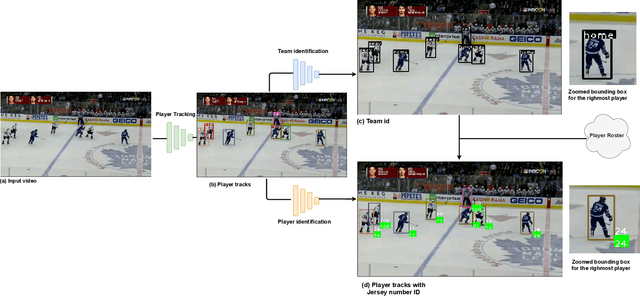
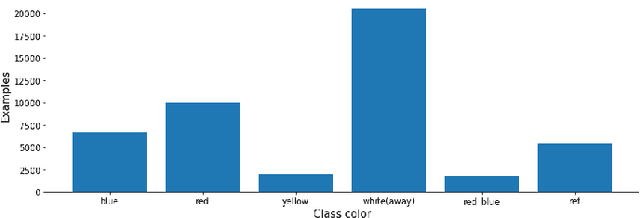
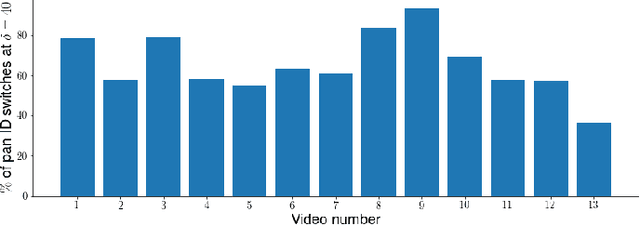
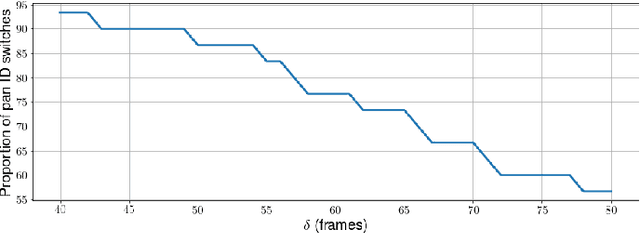
Abstract:Tracking and identifying players is a fundamental step in computer vision-based ice hockey analytics. The data generated by tracking is used in many other downstream tasks, such as game event detection and game strategy analysis. Player tracking and identification is a challenging problem since the motion of players in hockey is fast-paced and non-linear when compared to pedestrians. There is also significant camera panning and zooming in hockey broadcast video. Identifying players in ice hockey is challenging since the players of the same team look almost identical, with the jersey number the only discriminating factor between players. In this paper, an automated system to track and identify players in broadcast NHL hockey videos is introduced. The system is composed of three components (1) Player tracking, (2) Team identification and (3) Player identification. Due to the absence of publicly available datasets, the datasets used to train the three components are annotated manually. Player tracking is performed with the help of a state of the art tracking algorithm obtaining a Multi-Object Tracking Accuracy (MOTA) score of 94.5%. For team identification, the away-team jerseys are grouped into a single class and home-team jerseys are grouped in classes according to their jersey color. A convolutional neural network is then trained on the team identification dataset. The team identification network gets an accuracy of 97% on the test set. A novel player identification model is introduced that utilizes a temporal one-dimensional convolutional network to identify players from player bounding box sequences. The player identification model further takes advantage of the available NHL game roster data to obtain a player identification accuracy of 83%.
DeepDarts: Modeling Keypoints as Objects for Automatic Scorekeeping in Darts using a Single Camera
May 20, 2021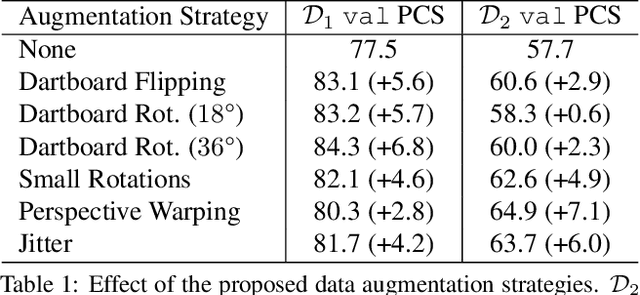

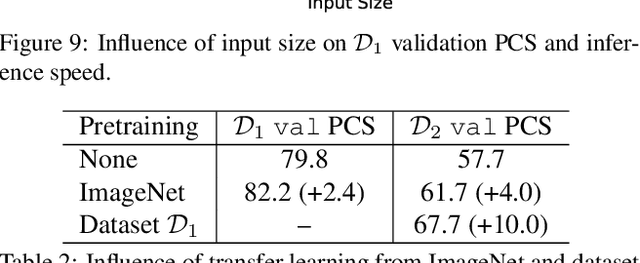
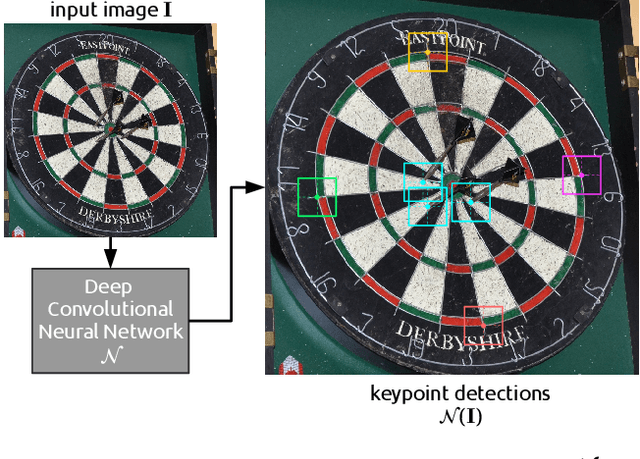
Abstract:Existing multi-camera solutions for automatic scorekeeping in steel-tip darts are very expensive and thus inaccessible to most players. Motivated to develop a more accessible low-cost solution, we present a new approach to keypoint detection and apply it to predict dart scores from a single image taken from any camera angle. This problem involves detecting multiple keypoints that may be of the same class and positioned in close proximity to one another. The widely adopted framework for regressing keypoints using heatmaps is not well-suited for this task. To address this issue, we instead propose to model keypoints as objects. We develop a deep convolutional neural network around this idea and use it to predict dart locations and dartboard calibration points within an overall pipeline for automatic dart scoring, which we call DeepDarts. Additionally, we propose several task-specific data augmentation strategies to improve the generalization of our method. As a proof of concept, two datasets comprising 16k images originating from two different dartboard setups were manually collected and annotated to evaluate the system. In the primary dataset containing 15k images captured from a face-on view of the dartboard using a smartphone, DeepDarts predicted the total score correctly in 94.7% of the test images. In a second more challenging dataset containing limited training data (830 images) and various camera angles, we utilize transfer learning and extensive data augmentation to achieve a test accuracy of 84.0%. Because DeepDarts relies only on single images, it has the potential to be deployed on edge devices, giving anyone with a smartphone access to an automatic dart scoring system for steel-tip darts. The code and datasets are available.
Event detection in coarsely annotated sports videos via parallel multi receptive field 1D convolutions
Apr 13, 2020



Abstract:In problems such as sports video analytics, it is difficult to obtain accurate frame level annotations and exact event duration because of the lengthy videos and sheer volume of video data. This issue is even more pronounced in fast-paced sports such as ice hockey. Obtaining annotations on a coarse scale can be much more practical and time efficient. We propose the task of event detection in coarsely annotated videos. We introduce a multi-tower temporal convolutional network architecture for the proposed task. The network, with the help of multiple receptive fields, processes information at various temporal scales to account for the uncertainty with regard to the exact event location and duration. We demonstrate the effectiveness of the multi-receptive field architecture through appropriate ablation studies. The method is evaluated on two tasks - event detection in coarsely annotated hockey videos in the NHL dataset and event spotting in soccer on the SoccerNet dataset. The two datasets lack frame-level annotations and have very distinct event frequencies. Experimental results demonstrate the effectiveness of the network by obtaining a 55% average F1 score on the NHL dataset and by achieving competitive performance compared to the state of the art on the SoccerNet dataset. We believe our approach will help develop more practical pipelines for event detection in sports video.
 Add to Chrome
Add to Chrome Add to Firefox
Add to Firefox Add to Edge
Add to Edge